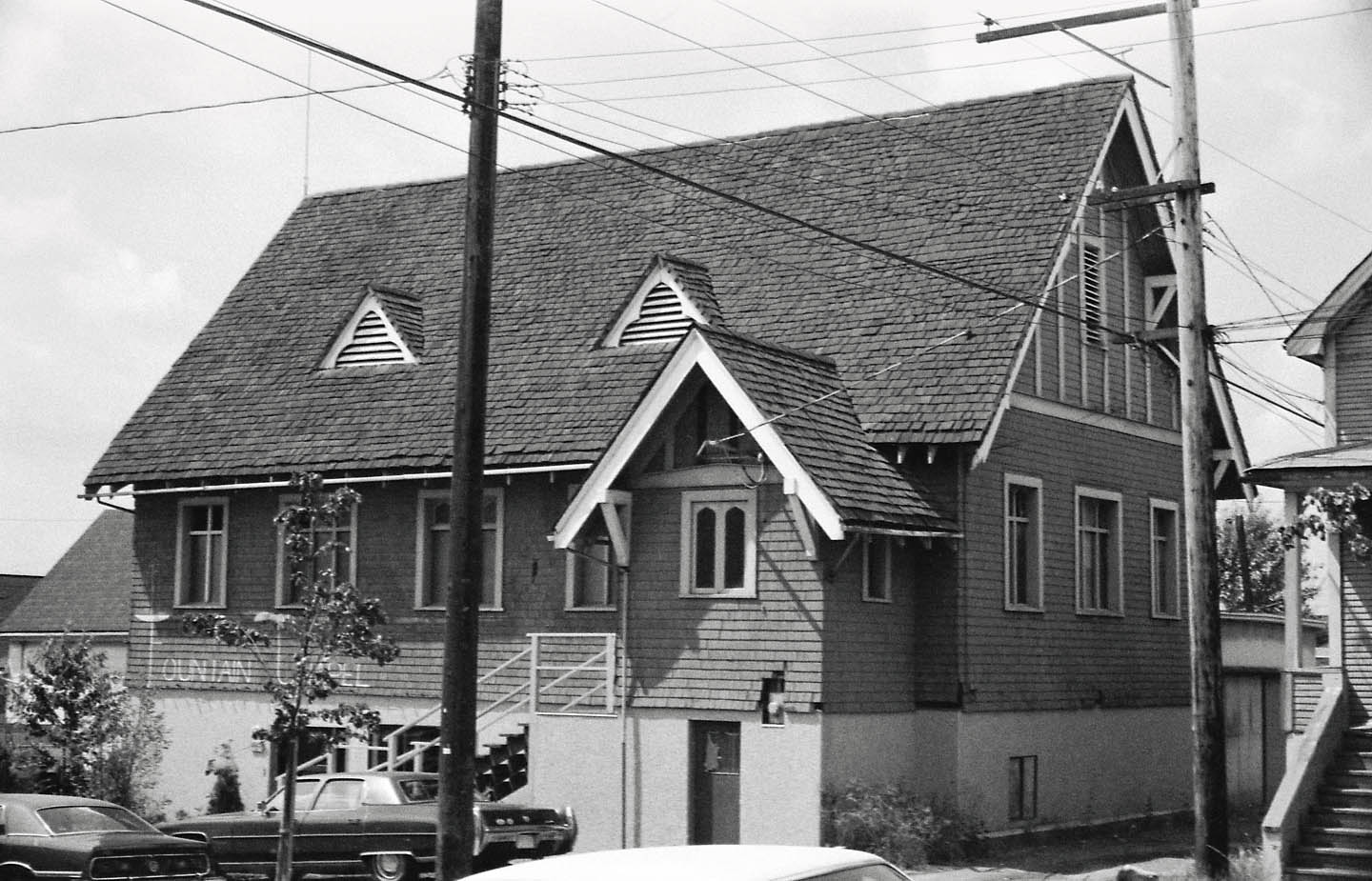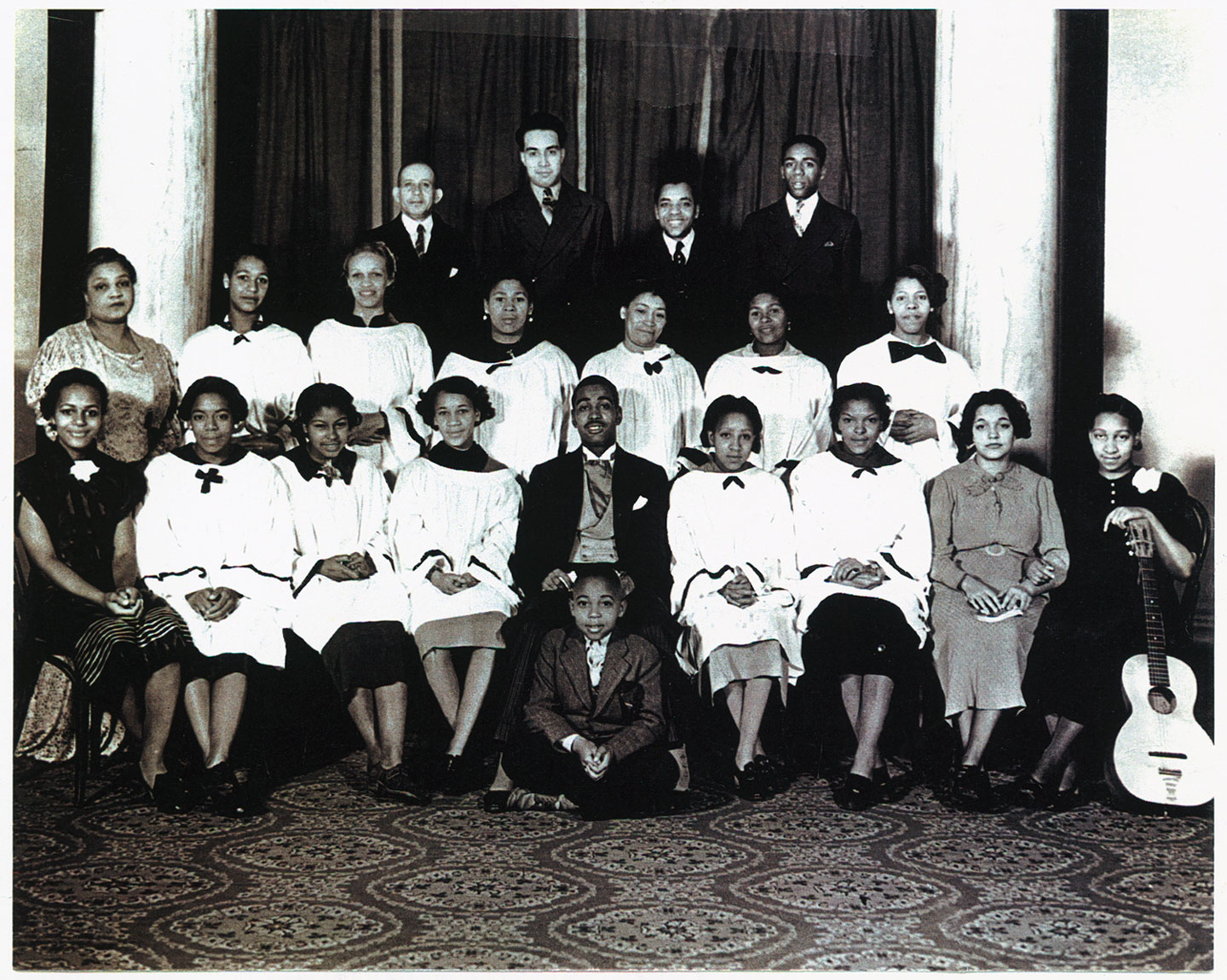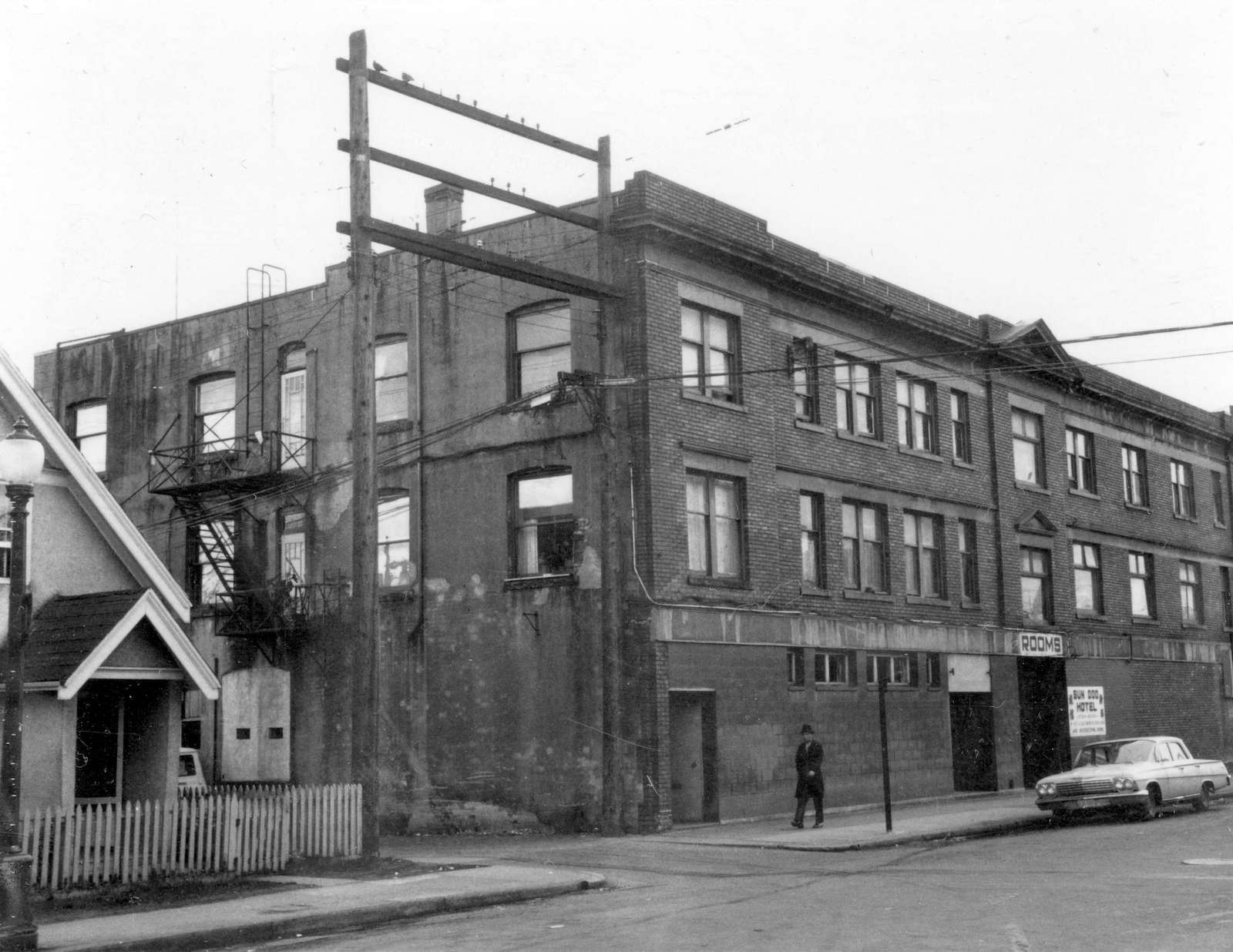“I press my face against windows—shops, cafés, hardware stores, and boutiques,” observes the eponymous hero of Chelene Knight’s new coming-of-age novel, Junie, upon first sight of Vancouver’s long-gone Black neighbourhood, Hogan’s Alley. “The misshapen, uneven, rusted metal sheets used for fencing in some yards are charming. I take note of the sawdust, hickory, and smoke in the air. The whistle of the trains in the distance, a sign of dialogue. The men who work on the trains walk to work looking regal in their freshly pressed uniforms. … I wonder if rest ever finds them. What colour would that be?”
On the edge of Strathcona that now backs onto the Georgia Viaduct, an enclave of Vancouver’s Black folk once thrived. No one knows how Hogan’s Alley got its name, which was in use by 1914, but it may have stemmed from the 19th-century Hogan’s Alley comic strip about slum life in New York. The Fraser River Gold Rush (1858) along with oppressive segregration laws in California spurred Black migration to British Columbia. In the early 20th century, Black populations from Oklahoma (by way of Alberta) and railway porters from the nearby Great Northern Railway gathered in the southwest corner of the area called the East End. Over the decades until it was demolished to make way for the viaduct, it was known for its music, its food, and its permissive, welcoming atmosphere.
Picturing Hogan’s Alley is almost as hard for me, a Chinese Canadian, as imagining either Vancouver without its Chinatown or my childhood in a city where no one looks like me. But for Vancouver’s Black community, this stretch of Strathcona has, until recently, represented a stolen birthright.
In September, the City of Vancouver took the first step in a historic act of redress by agreeing to place this area in a community trust. The trust will be operated by the Hogan’s Alley Society, helmed by its newly appointed executive director, Djaka Blais. “Growing up as a Black person in Western Canada is often a very isolating experience,” Blais says. “We don’t see ourselves reflected. We don’t feel fully welcome. Knowing that in the past there was this community, that it was possible—the opportunity to build on that is very exciting.” Hopes have soared among Black Vancouverites, but the challenge is daunting. How do you rebuild a neighbourhood that’s been decimated, its residents long scattered and gone?

Fountain Chapel, purchased with fundraising help from Jimi Hendrix’s grandmother, Nora Hendrix. Photo © City of Vancouver.
Even in its heyday, Hogan’s Alley didn’t feature soaring architecture. Archival photos show modest homes and empty lots along Park Lane, a packed dirt road running between Union and Prior streets. The sky is bare except for electrical poles. The Pullman Porters’ Club, where railway workers spent the night, was a three-storey brick building just east of Main Street. Originally a Lutheran church, Fountain Chapel sat at the corner of Jackson and Prior streets. The chapel was founded in 1918 with fundraising help from Nora Hendrix, the Tennessee-raised grandmother of guitar god Jimi Hendrix, who spent chunks of his childhood in the area.
“Getting dollars together them days was hard,” Hendrix recalled in Daphne Marlatt and Carol Itter’s Opening Doors in Vancouver’s East End, a 1979 oral history of Strathcona. “When you went out to work, all you got was a dollar and a half for your day’s work.” One of the few remaining structures from Hogan’s Alley (and now a private residence), Fountain Chapel became a de facto community centre, hosting American Thanksgiving celebrations and chitlin dinners.
In the 1930s and ’40s, Hogan’s Alley was an entertainment hub based around “chicken houses,” including Buddy’s, Dode’s, and later, Vie’s Chicken and Steak House. “There was nothing but parties in Hogan’s Alley—night time, any time, and Sundays all day,” musician Austin Phillips remembered in Opening Doors. “You could hear jukeboxes going, you hear somebody hammering the piano, playing the guitar, or hear some fighting, or see some fighting, screams, and everybody carrying on.” Phillips recalled Vancouver mayor L.D. Taylor, reputedly lax on vice, stopping by the area for a drink.
The East End gained a reputation for its seediness and urban decline, reinforced by city policies including zoning the area industrial—which made home improvement difficult—and an “urban renewal” project that demolished homes in favour of housing projects. By the 1960s, years before the viaduct was built (in support of an interurban freeway project that was scrapped because of community protests), Vancouver’s small Black population was already scattering.

Fountain Chapel African Methodist Episcopal Church Choir and guests. Photo courtesy of the Gibson Family Collection.
In June 2020, weeks after George Floyd was slain by Minneapolis police, Black Lives Matter protesters occupied the Georgia and Dunsmuir viaducts for over 24 hours, blocking and barricading its on-ramps. Demonstrators invoked the memory of Hogan’s Alley while linking it to more recent displacement such as the eviction of homeless encampments in the Downtown Eastside.
The protest was only one example of how the symbolic power of Hogan’s Alley, as a paradise lost and forever strived for, might never be stronger. In 2014, visual artist Stan Douglas, in a work entitled Circa 1948, meticulously recreated Hogan’s Alley as a virtual neighbourhood that could be visited in an immersive iPhone app, where one can “eavesdrop” on residents’ conversations. In 2004, poet Wayde Compton recreated the area in a more whimsical way in his “retro-speculative” work “Rune.” Saddened by visiting the area and seeing no trace of Black history, he imagined landmarks such as a Black “benevolent society” and a mosque. With staged archival photos to accompany his imagined historical documents, Compton’s conceptual poem prompts readers to consider how we rewrite the past to suit our present-day needs.
In Junie, Knight’s eponymous protagonist overcomes a difficult relationship with her alcoholic mother to realize her talents as a painter and claim her sexuality. “Coming from a marginalized background, in publishing, it feels like we are expected to write through this traumatic lens,” Knight says. “But I feel like there’s a need or desire to extract joy, even in some of the toughest situations.”
It would be great to see more of a community of different cultures gathering, and for my kids to see more people who look like them.
Meanwhile, some of Vancouver’s Black residents, who number around 40,000 in the metropolitan area, have moved to the neighbourhood, in search of a sense of belonging. After managing high-end local establishments such as Chambar and Shangri-La Vancouver, Justin Tisdall turned to the past for inspiration when he launched Juke Fried Chicken in 2016 on Keefer Street, a few blocks from the Hogan’s Alley site. “It would be great to see more of a community of different cultures gathering,” Tisdall says about the area’s future, “and for my kids to see more people who look like them. I didn’t necessarily have that growing up here.”
In January, Maya Preshyon, a fourth-year UBC student, grew frustrated about the lack of diversity in the city’s arts community. Rather than lapse into despair, she decided to open a library “because everyone’s welcome.” Launched in September through GoFundMe donations, the Vancouver Black Library, in a basement space in Sun Wah Centre on Keefer Street, is, Preshyon believes, “what might have been if Hogan’s Alley wasn’t dismantled.”

Photo © City of Vancouver.
This combination of optimism and action, turning an intellectual, artistic exercise of imagining a resurrected Hogan’s Alley site into a real-life opportunity to address historic injustices, animates those revitalizing Black Vancouver’s historic home. “I hope it’s a place where Black people come and feel for the first time, ‘I belong here. This is my city, and this place reminds me that I am here and I belong,’” says June Francis, chair of the Hogan’s Alley Society board and an associate professor of marketing at SFU.
Francis envisions purpose-built structures for a new Black cultural centre, nonmarket housing, a daycare, and independent businesses. Community input from within and outside Black Vancouver will be solicited. She is also careful to note that the residents of Nora Hendrix Place, the temporary modular housing facility for low-income people just off the viaduct, would keep their homes. “We know we were displaced,” she adds. “We know that displacement leads to community erasure.”
The wait for the new Hogan’s Alley to materialize allows us to take stock of what its legacy inspires today. While hopeful for additional funding to pay for the Vancouver Black Library, Preshyon, for instance, is justifiably proud of what she achieved. “I’m excited to be here,” the 21-year-old says. “Even though it’s small, we still made it happen.”
Read more from our Winter 2022 issue.









